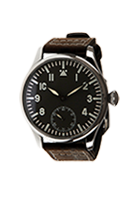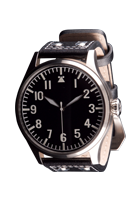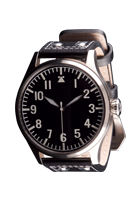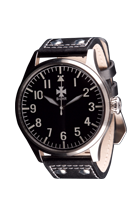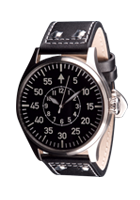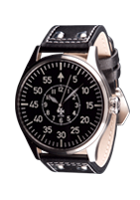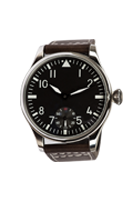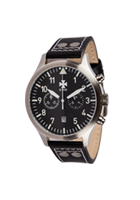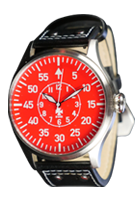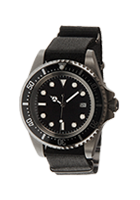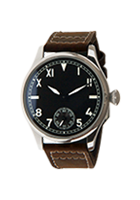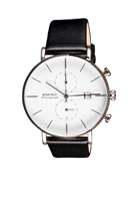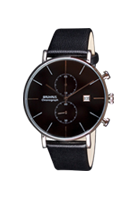Tradition – Precision - Quality
There are some watch designs that not only stand the test of time, but also transcend their original context to become a classic.
In 1935, Adolf Hitler announced his plans to reconstitute Germany’s Air Force and officially created the Luftwaffe. The RLM (Reichs-Luftfahrtministerium), responsible for aircraft development, also sought a commensurate. In 1935 conceptual designs and standard criteria emerged, making the B-Uhr instantly recognizable.


These watches were big. 55mm big. The size accommodated large hand-wound movements typically used in pocket watches, but the B-Uhr was always to be a watch for the wrist. Each one used a Breguet balance spring. Inside, the movement was surrounded by an iron core, making the B-Uhr anti-magnetic – a must for aviation. To correct for time discrepancies, the movements were capable of stopping the central seconds hand by pulling the crown, or hacking, and the oversized diamond or onion crown could be operated with gloves on the hand. A very long, double-riveted leather strap, long enough to go over the leather flight jacket, held the B-Uhr in place.

The large size made them unambiguously legible and their black dials with white Arabic numerals further aided the task of precise reading. The flame-blued sword hands were covered in luminous material as was the distinguishing upwards-orientation triangle or arrow at the twelve o’clock position, accompanied by two dots on the Type A models. The initial Type A model had only an outer chapter ring, but the later type B (starting in 1941) had an outer ring for minutes/seconds and an inner ring for hours. Each case had FL23883 engraved on the left side. FL designated flieger, and 23 identified the watch as a navigation watch.
B-Uhren is an abbreviation for Beobachtungs-uhren, literally Observation watches. B-Uhr is singular, and B-Uhren is plural. The B-Uhren were property of the Luftwaffe, not the navigators. The navigator was issued his watch before flight, and then returned the watch after completing the mission. Navigators received a signal beep from the airbase, which in turn set its chronometer to the standard time of the German Naval Observatory (Deutsche Seewarte), and if the navigator’s time was off, the hacking mechanism allowed for adjustment. An accurate watch was necessary for navigation, so all the B-Uhren watches were regulated and tested to the highest chronometer standards of the Deutsche Seewarte in Hamburg. Bomber navigators peered over the navigation table, their B-Uhren at the ready, and plotted course, copied astronomical fixes and noted events on the map. The B-Uhr was a consummate navigational aid.
Five manufacturers – four German and one Swiss – supplied the B-Uhren. In Germany, A. Lange & Söhne, Wempe, Lacher & Company/Durowe (Laco), and Walter Storz (Stowa) produced the watch. Wempe and Stowa used Swiss movements; Wempe settled on the Thommen cal. 31, and Stowa used the Unitas cal. 2812. Lange used its big cal. 48 and then its cal. 48.1, and Laco used its (Durowe) cal. 5 – the only two companies to use in-house German movements. When Wempe purchased the Chronometerwerk in Hamburg in 1938, it gained a significant increase in production capacity, and to assist the limited production faced by Lange and Laco, Wempe assembled watches for them. To meet demand, Lange also sent ébauches and cases to a variety of other manufacturers for assembly and regulation. In smaller numbers, the Swiss International Watch Company IWC who supplied watches to both Axis and Allied forces, manufactured the B-Uhr (cal. 52T S.C.) for the Luftwaffe.
Today, B-UHR watches are continuing the great tradition of precision, quality and bold design set by the original B-Uhr.










